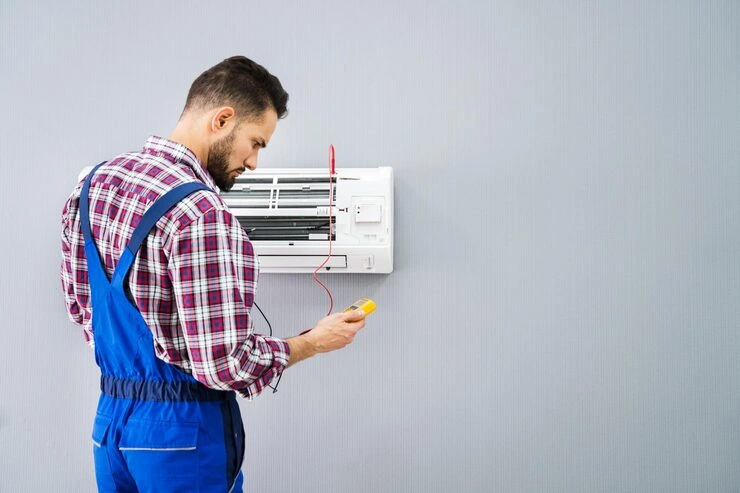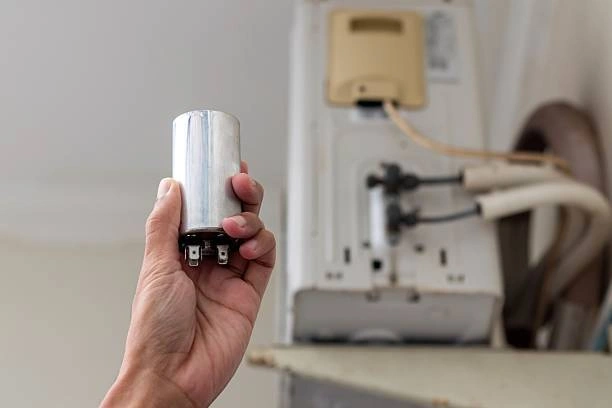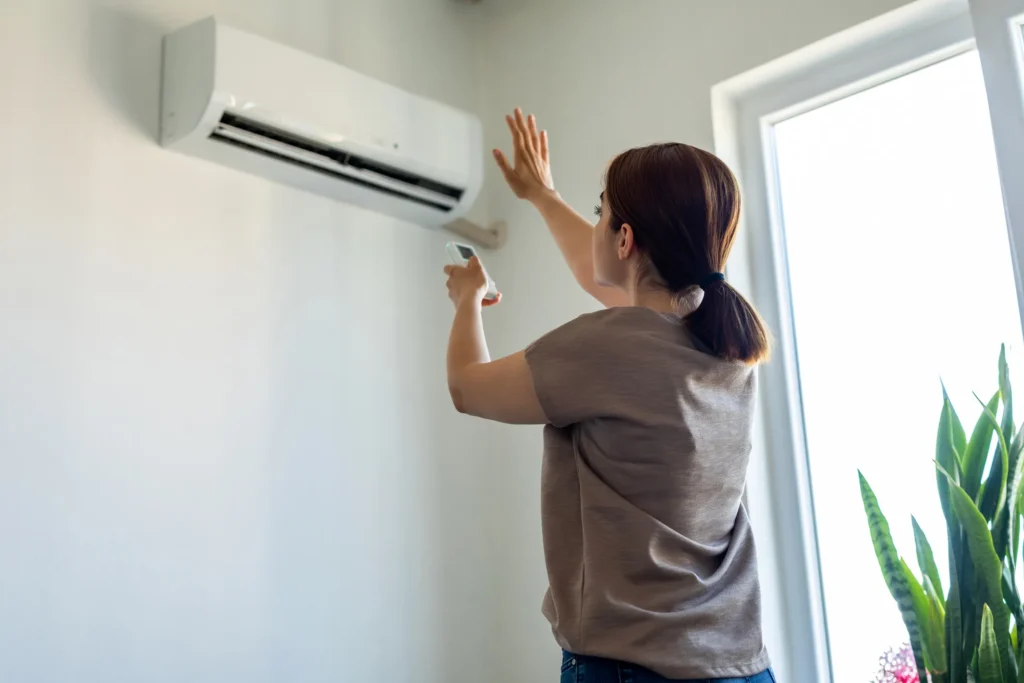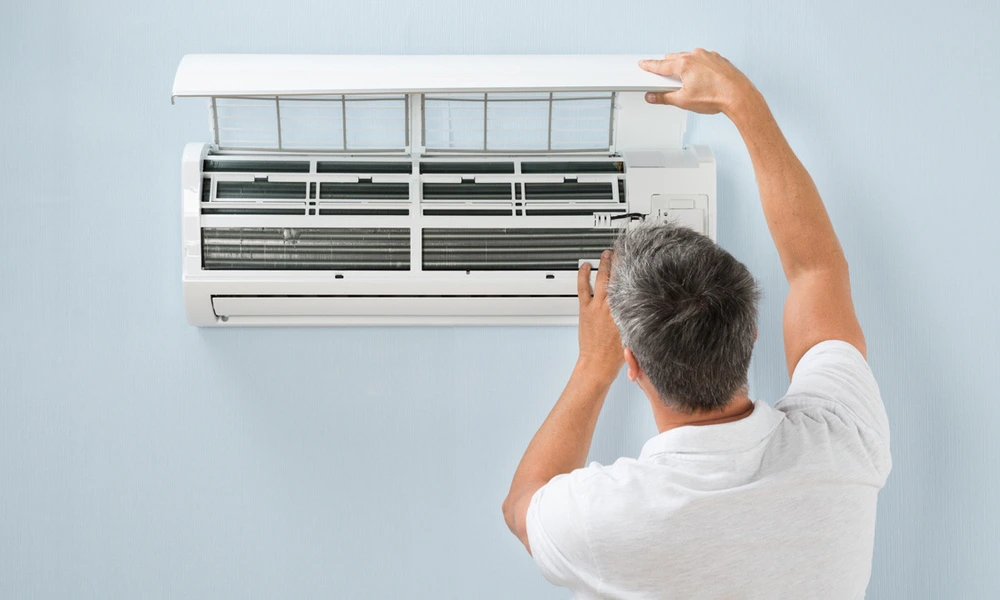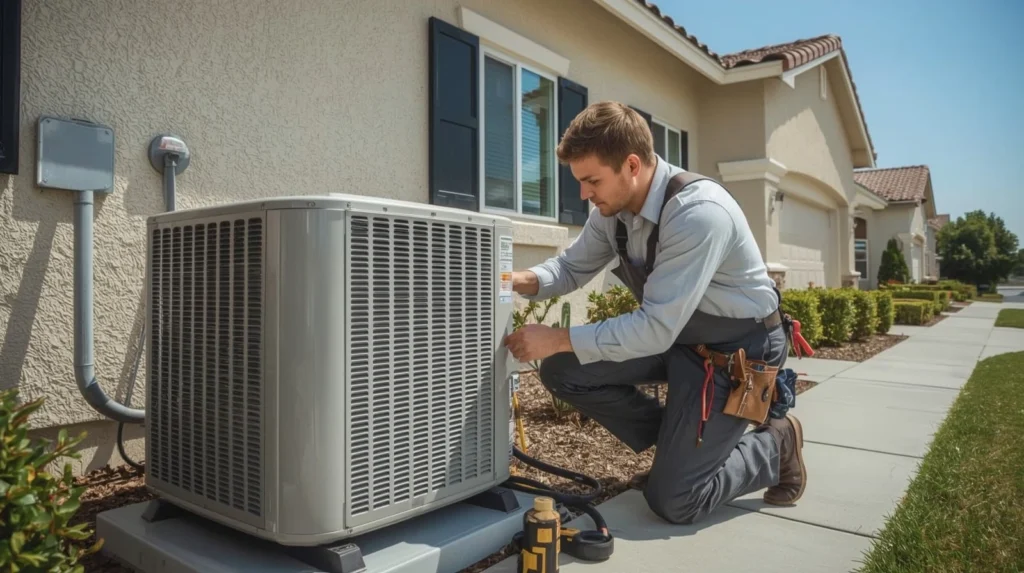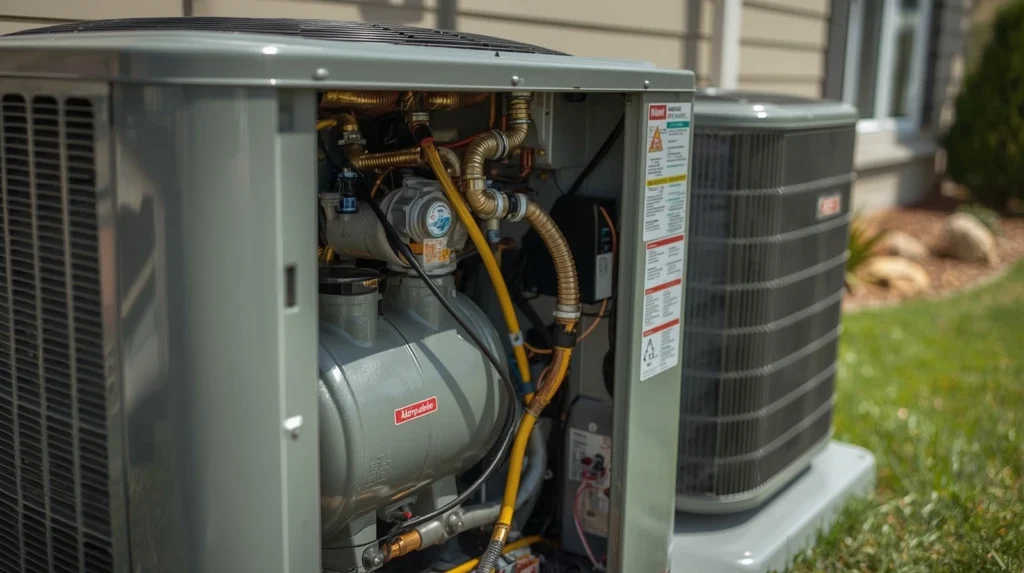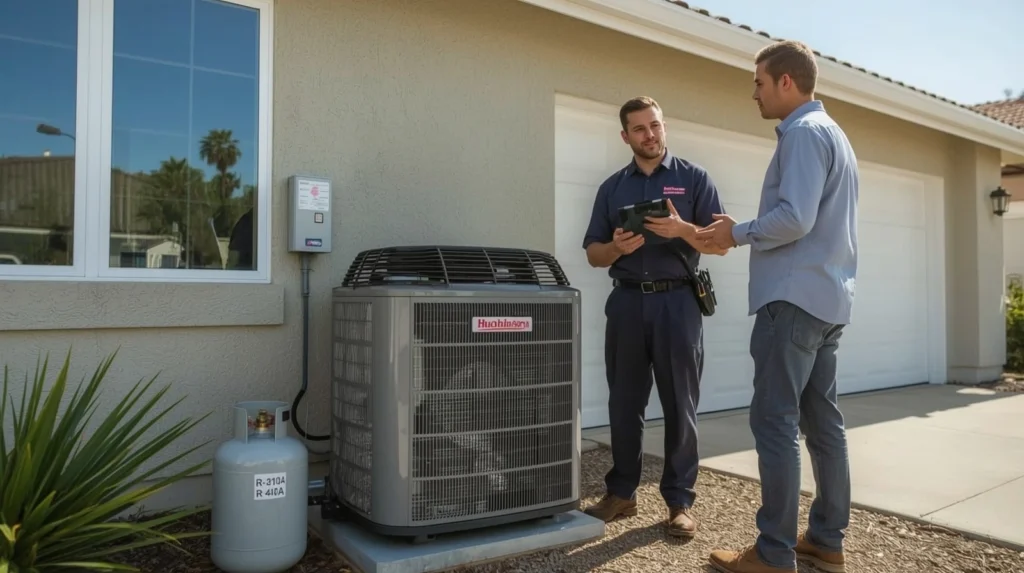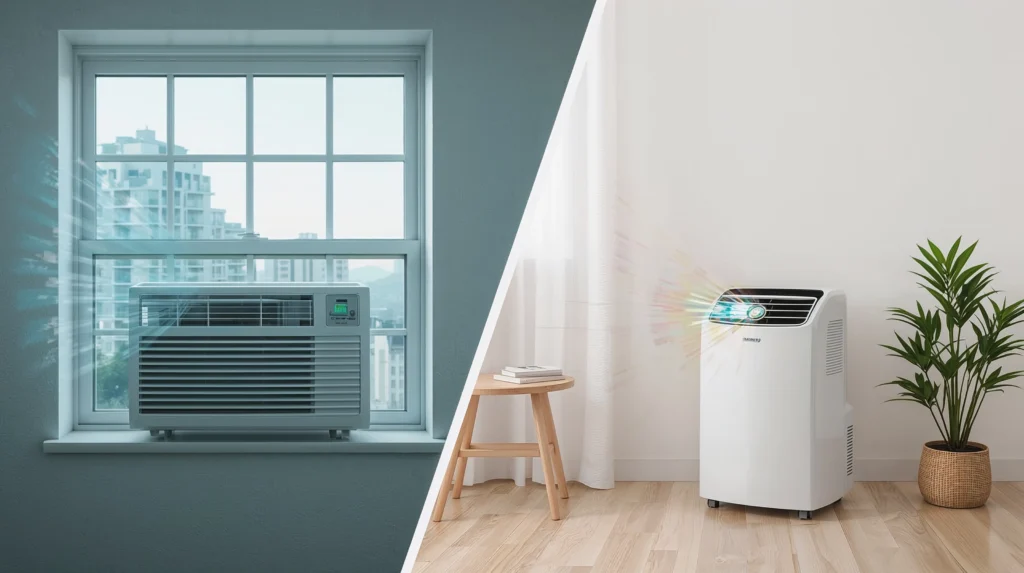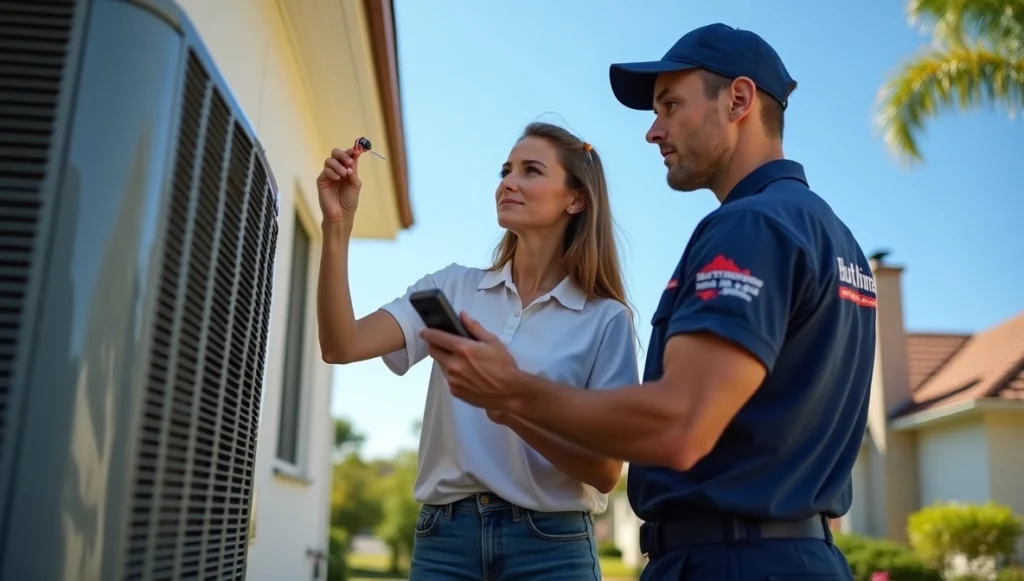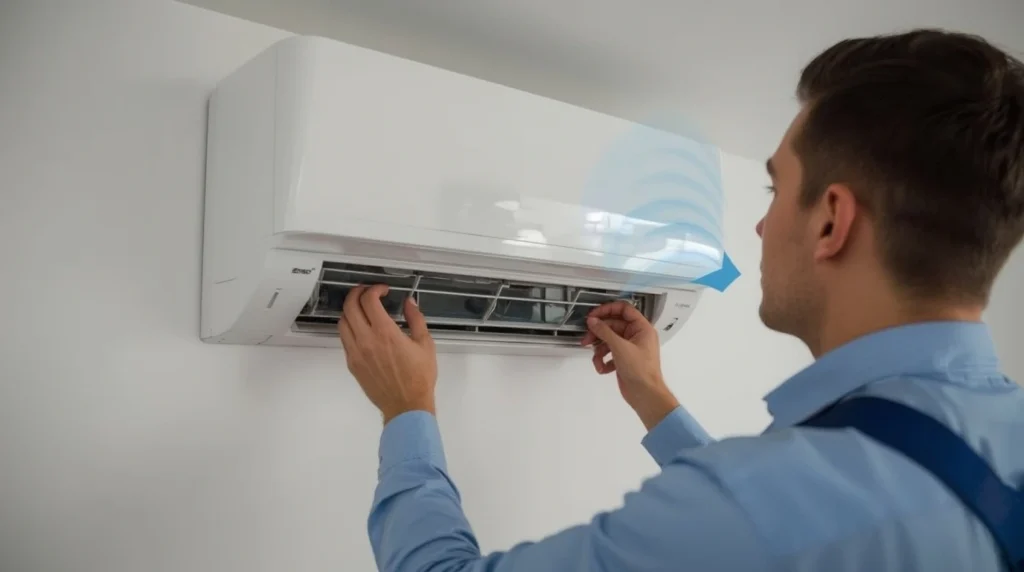How Much to Repair AC? | Quick Guide to Repair Costs
When your air conditioner stops working on a warm day, the first thing most homeowners think about is how much to repair AC. The answer depends on several factors, such as the type of problem, the parts that need attention, and whether your system requires a simple fix or a major replacement. At Hutchinson Heating and Air, we believe in complete transparency. This guide will help you understand how much to repair AC, what influences the overall cost, and how to decide whether it’s better to repair or replace your system — so you can make the best decision for your comfort and budget. Understanding the Cost of Fixing AC The AC unit repair cost varies appreciably relying at the problem. On average, owners can anticipate to spend between $150 and $900 for trendy AC maintenance. Minor troubles inclusive of capacitor replacements or thermostat modifications are extraordinarily affordable, at the same time as main maintenance regarding the compressor or coil can exceed $2,000. Here`s a short breakdown: Minor Repairs: $100–$300 (e.g., fuse, capacitor, or sensor replacements) Moderate Repairs: $300–$800 (e.g., refrigerant leaks, thermostat problems, motor troubles) Major Repairs: $800–$2,500 (e.g., compressor, evaporator coil, or condenser replacement) However, numerous elements decide the cost to fix an air conditioner, which we`ll discover next. Key Factors Affecting AC Repair Costs Type of Air Conditioner The sort of device you personal performs a prime position in figuring out the AC unit repair cost. Central Air Conditioning Systems: More complicated and pricey to restore because of ductwork and a couple of components. Ductless Mini-Splits: Slightly less expensive however require specialized expertise. Window or Portable Units: Easiest and most inexpensive to restore, frequently under $200. Age and Condition of the System If your AC unit is older than 10–12 years, elements can be tough to find, and restore prices can upward push quickly. In a few cases, changing the unit is probably extra cost-powerful than non-stop maintenance. Type of Repair or Replacement Needed Some maintenance are short fixes, whilst others contain predominant thing replacements. Thermostat Replacement: $100–$250 Refrigerant Leak Repair: $200–$1,000 Blower Motor Replacement: $400–$700 Compressor Replacement: $1,200–$2,000 Evaporator Coil Replacement: $900–$1,800 Labor Costs and Service Fees Labor generally prices between $75 and $150 in line with hour, relying to your region and the complexity of the issue. Technicians from Hutchinson Heating and Air offer obvious pricing and prematurely estimates earlier than any paintings begins. Emergency or After-Hours Repairs If your AC stops running past due at night time or over the weekend, you could face extra emergency carrier costs of $100–$200. To keep away from this, recall normal renovation to trap troubles early. Signs Your AC Needs Professional Repair If you observe any of the following, your AC probable wishes on the spot attention: Warm air blowing from vents Unusual noises (buzzing, rattling, or grinding) Musty or burning smells Water or refrigerant leaks Frequent on/off cycling Higher-than-standard power bills Ignoring those caution symptoms and symptoms can cause high-priced maintenance or maybe whole gadget failure. The faster you name Hutchinson Heating and Air, the greater less expensive your repair will be. You may read How Much Does AC Cleaning Service Cost? Repair vs. Replace: Which Option Is Right for You? When going through a excessive AC unit repair cost, it`s natural to surprise whether or not alternative is probably the smarter choice. Here`s a standard rule of thumb: Repair in case your gadget is below 10 years vintage and the restore value is much less than 40% of a brand new unit. Replace in case your gadget is over 12–15 years vintage, makes use of previous refrigerants (like R-22), or calls for common maintenance. The professional technicians at Hutchinson Heating and Air can investigate your gadget and assist you’re making an knowledgeable selection primarily based totally to your unit`s age, condition, and electricity performance. How to Lower Your AC Repair Costs Regular Maintenance Schedule expert tune-ups at the least two times a year. Routine upkeep continues your gadget green and forestalls luxurious breakdowns. Change Filters Regularly Clogged filters lessen airflow, forcing your AC to paintings harder. Replace filters each 1–three months. Clean Outdoor Units Clear debris, leaves, and dust from round your condenser to keep right warmth exchange. Use a Smart Thermostat Smart thermostats save you overuse, decreasing put on on additives and reducing the cost of fixing AC withinside the lengthy run. Work with Trusted Experts Hiring a licensed and skilled enterprise like Hutchinson Heating and Air guarantees correct diagnosis, truthful pricing, and lengthy-time period solutions. Why Choose Hutchinson Heating and Air For years, Hutchinson Heating and Air has been the relied on call in AC repair service throughout Temecula and Murrieta. We delight ourselves on honesty, professionalism, and top-first-class workmanship. Here`s why owners select us: Licensed, bonded, and insured HVAC professionals Transparent pricing — no hidden fees Emergency restore offerings available Maintenance applications for lengthy-time period savings 100% pride guaranteed When you select Hutchinson Heating and Air, you`re now no longer simply getting a restore — you`re getting peace of mind. Conclusion – How Much to Repair AC Understanding how much to repair AC helps homeowners plan ahead and avoid unexpected expenses. The total cost depends on the type of issue, labor, and replacement parts. If you’re facing cooling problems, don’t wait for them to worsen. At Hutchinson Heating and Air, we offer fast, affordable, and reliable AC repair in Murrieta to restore your comfort quickly. Contact our certified HVAC experts today for honest pricing, quality repairs, and long-lasting cooling solutions you can trust. Frequently Asked Questions (FAQ) How a good deal does it usually cost to repair an AC unit? Most AC upkeep fee between $one hundred fifty and $900, relying on the difficulty and components required. Major element replacements can fee up to $2,500. What reasons AC gadgets to stop cooling? Common motives consist of low refrigerant, grimy filters, electric faults, or a failing compressor. Can I fix my AC unit myself? DIY upkeep aren’t recommended. AC structures comprise electric and
How Much to Repair AC? | Quick Guide to Repair Costs Read More »

